Ajrak of Sindh
Ajrak of Sindh - An Indus Valley Hallmark
Ajrak of Sindh - A hallmark of the Indus Valley civilization, the province of Sindh.
Ajrak is a traditional block-printed textile deeply rooted in the cultural heritage of Sindh, Pakistan. Its history traces back to the Indus Valley Civilization, around 2500 BCE, where evidence of similar textile printing techniques was found in archaeological sites like Mohenjo-Daro, where it began as an integral part of the region's textile practices.

Ajrak of Sindh - A Symbol of Honor for Guests
The term "Ajrak" is believed to derive from the Arabic word "Azraq" meaning blue, which is a prominent color in Ajrak textiles...this ancient artwork is made from vegetable dyes with block prints in navy blue on maroon background traditionally. The vibrant patterns when added with some hand embroidered thread work, turn into pieces of art. These can be used as throws, bed sheets and table cover.
It is traditional in Pakistan to present it to their respected guests, a symbol of honor and prestige. This can be worn as the traditional head wear or as a shawl. The region has known this particular work of art since ancient times, also called Ajruk.
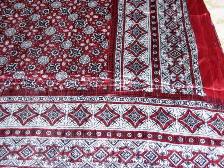 |
 |
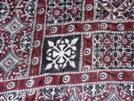 |
Ajrak of Sindh - Cultural Significance
Ajrak is more than just a textile; it is a symbol of Sindhi identity and heritage. It is often worn during cultural ceremonies, festivals, and special occasions. The patterns on Ajrak are believed to have protective properties and are associated with the land and the environment of Sindh. The craft of making Ajrak is also a source of livelihood for many artisans in the region, preserving traditional skills and contributing to the local economy.
Ajrak holds significant cultural value in Sindh. It is commonly worn by both men and women, symbolizing pride, respect, and hospitality. Ajrak is used in various aspects of daily life and ceremonies, from births to weddings and even funerals.
In conclusion, Ajrak of Sindh is a cherished cultural heritage symbol of Pakistan, reflecting the rich history, artistic ingenuity, and cultural traditions of the Sindhi people. Its meticulous making process, vibrant colors, and natural raw materials underscore the deep connection between the craft and the natural environment.
Ajrak of Sindh - Role of Women Artisans and Designer
Women artisans and designers play a crucial role in the creation and preservation of Ajrak, contributing significantly to its production, innovation, and cultural continuity. Their involvement spans from traditional crafting methods to modern design adaptations, ensuring that this ancient art form remains vibrant and relevant.
Role of Women Artisans
1. Traditional Craftsmanship:
- Women in rural Sindh are deeply involved in various stages of Ajrak production. They often participate in the initial preparation of the fabric, including washing and treating the cotton with natural ingredients like camel dung and seed oil to soften it.
- Women artisans also assist in the meticulous process of block printing. While traditionally men carve the wooden blocks and do the initial printing, women are involved in subsequent stages, such as applying natural dyes and ensuring the precise alignment of patterns.
2. Skill Transmission:
- Women play a vital role in passing down the techniques of Ajrak making to younger generations. This transmission of skills is typically done within families, ensuring that traditional methods and cultural knowledge are preserved.
- Community workshops often involve women artisans who train new artisans, both male and female, in the intricate processes of Ajrak.
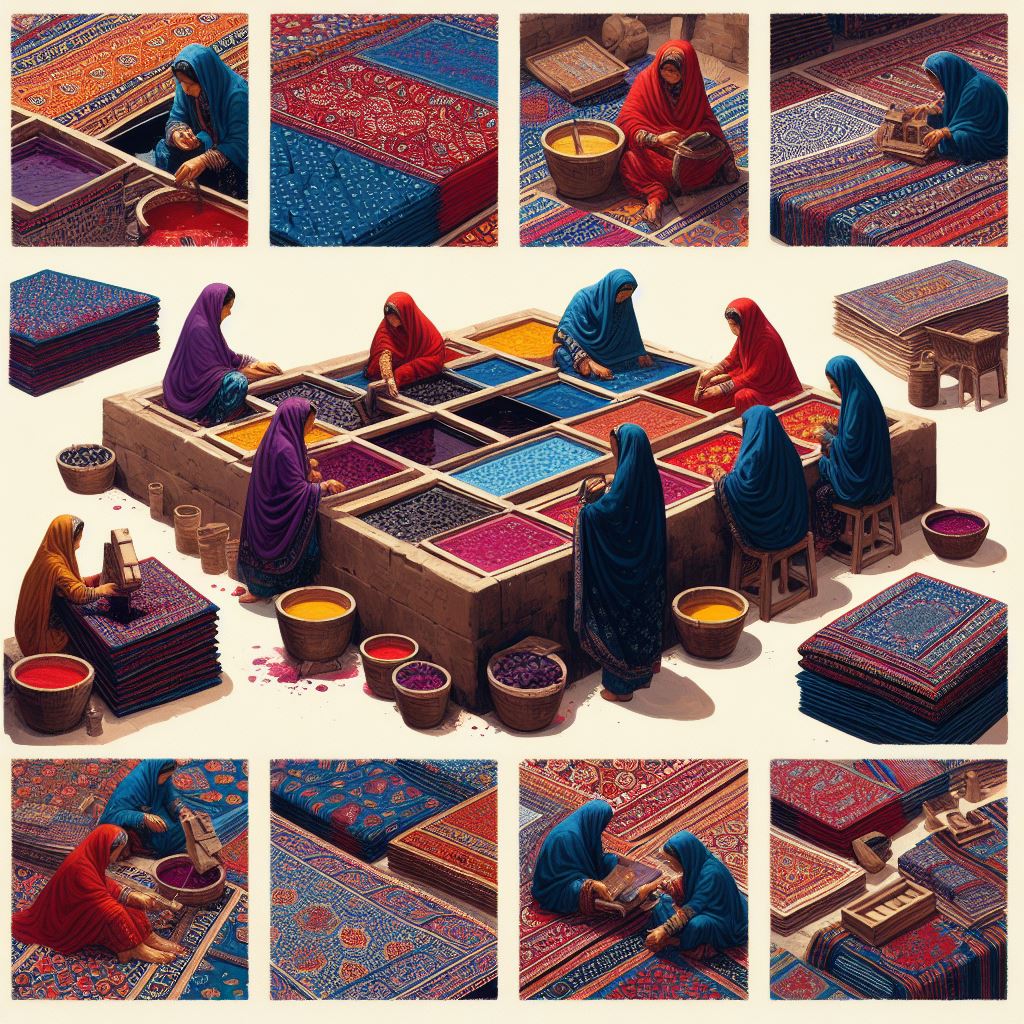 Women Artisans - Performing Various Processes
Women Artisans - Performing Various ProcessesContributions of Women Designers
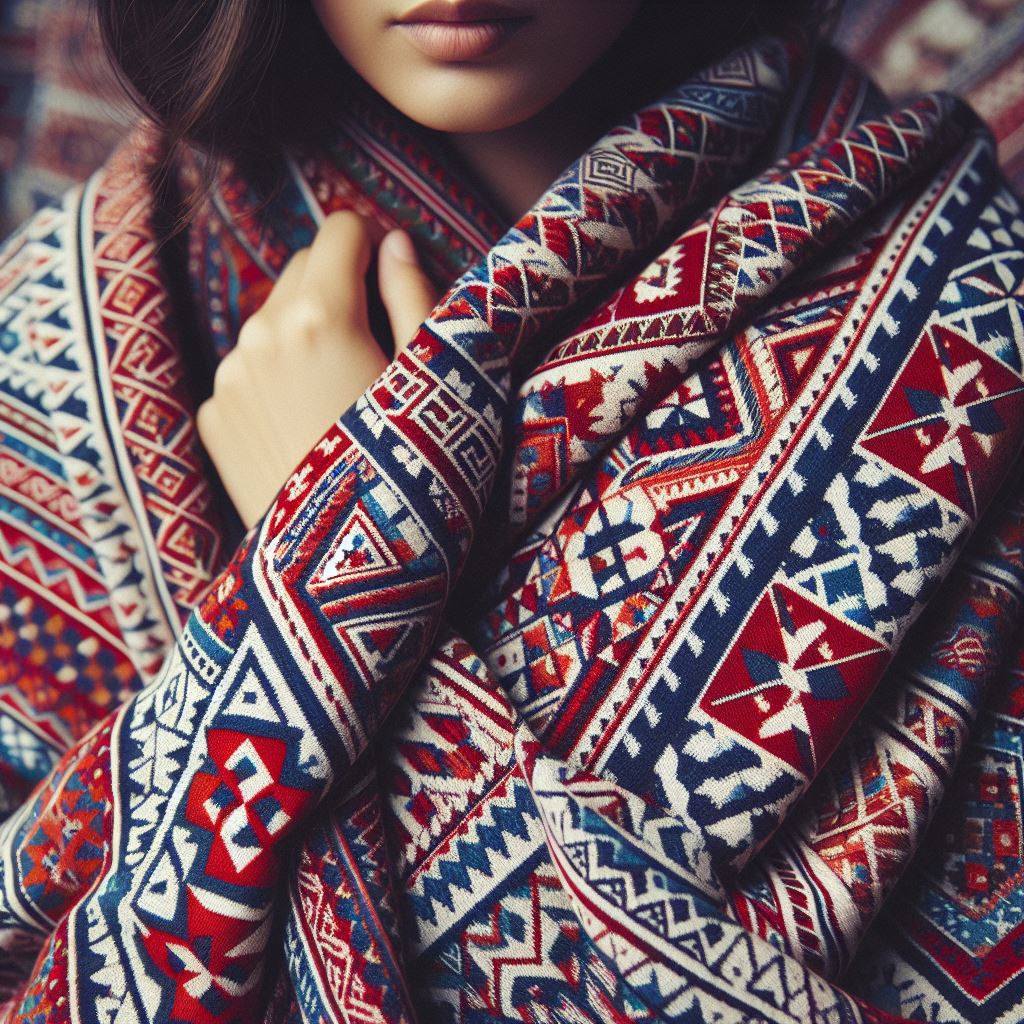 Ajrak Chadar Ajrak Chadar |
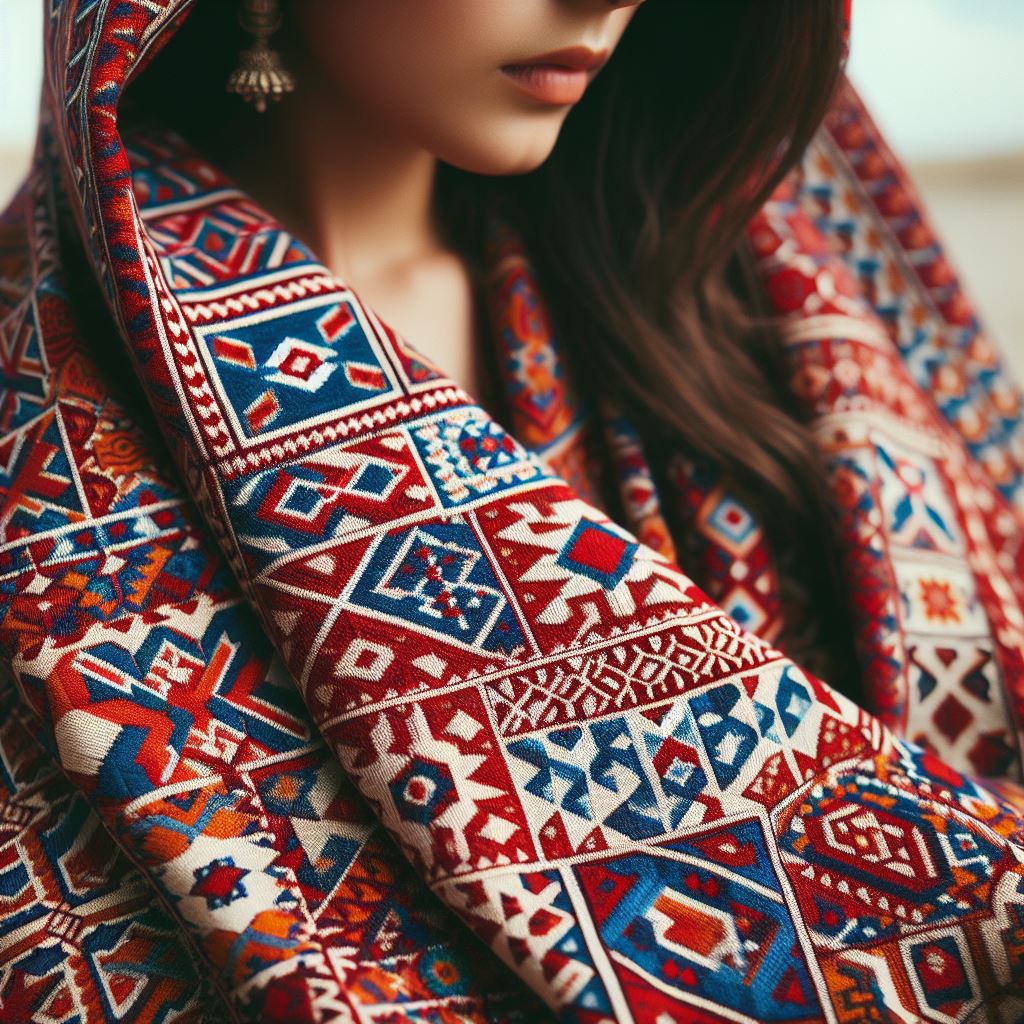 Ajrak Chadar Ajrak Chadar |
1. Innovation and Modernization:
- Contemporary female designers are pivotal in bringing Ajrak into modern fashion. They adapt traditional patterns and colors for contemporary clothing and accessories, blending heritage with modern aesthetics.
- Designers like Shamaeel Ansari and Maheen Khan have integrated Ajrak patterns into their collections, showcasing its versatility in haute couture and prêt-à-porter fashion. These designers help in elevating Ajrak's status from traditional wear to fashionable attire appreciated globally.
2. Economic Empowerment:
- Female designers and entrepreneurs have established cooperatives and small businesses that empower women artisans economically. These ventures provide fair wages, safe working conditions, and opportunities for women to market their products beyond local markets.
- Initiatives by organizations like the Indus Valley School of Art and Architecture include projects where women artisans collaborate with students and designers, fostering innovation and sustainable practices in Ajrak production.
3. Cultural Ambassadorship:
- Women involved in Ajrak not only preserve and innovate the craft but also act as cultural ambassadors. They participate in international exhibitions and fashion shows, promoting Ajrak on global platforms.
- By sharing the stories and significance of Ajrak, these women help raise awareness and appreciation for this unique art form, ensuring its continued relevance and admiration.
Ajrak of Sindh - Detailed Process and Materials
Making Process
The process of creating Ajrak is labor-intensive and involves multiple steps, each requiring precision and expertise:
1. Preparation of Fabric: The fabric, typically cotton, is washed thoroughly to remove any impurities. It is then soaked in a mixture of camel dung, seed oil, and water to soften it. The cloth is left for a week or more in this mixture to make the fibers soak the oil in. The cloth is placed on a hot vat fired by wood, covered with a thick blanket to contain the steam.
The cloth is washed extensively by thrashing the fabric on the ground till all residue of the processing materials is thoroughly washed out and the white parts of the fabric become visible. The cloth that is being dried in the sun is sprinkled with water to keep it moist. It is then dyed with indigo by the master dyer himself. Repeated drying and drenching make the colors deeper and color-fast.
2. Dyeing: Ajrak is traditionally dyed using natural dyes. The primary colors used are indigo (blue), madder (red), and other plant-based dyes. The dyeing process involves multiple stages, including repeated dyeing and washing to achieve the desired depth of color.
The piece of cloth is then dyed in the traditional colors of navy blue and maroon using stamps made from wood to put patterns on the cloth. The cloth is left to dry under the sun for days after which it is again processed with more oil. The cloth that is being dried in the sun is sprinkled with water to keep it moist. It is then dyed with indigo by the master dyer himself.
3. Sun Bleaching and Washing: After dyeing, the fabric is spread out in the sun to bleach and enhance the brightness of the colors. It is then washed repeatedly to remove excess dye and ensure the colors are fixed properly.
After drying the thoroughly washed fabric it is soaked in oil, dried lemon, water and molasses. The next dye to go onto the fabric is red in color. The artisans dip the fabric again and again till they achieve the desired red color.
4. Block Printing: The fabric is then printed using hand-carved wooden blocks. Each block represents a different part of the design, and multiple blocks are used to create the intricate patterns. The blocks are dipped in natural dyes and pressed onto the fabric.
With wooden blocks the patterns are carved by the artisans that are experts in the trade and to whom the craft has been handed down from generation to generation. The wooden blocks are then used like block printing on the previously processed and dyed fabric.
5. Finishing: Finally, the fabric is given a final wash and dried, completing the process. The result is a vibrant, beautifully patterned textile.
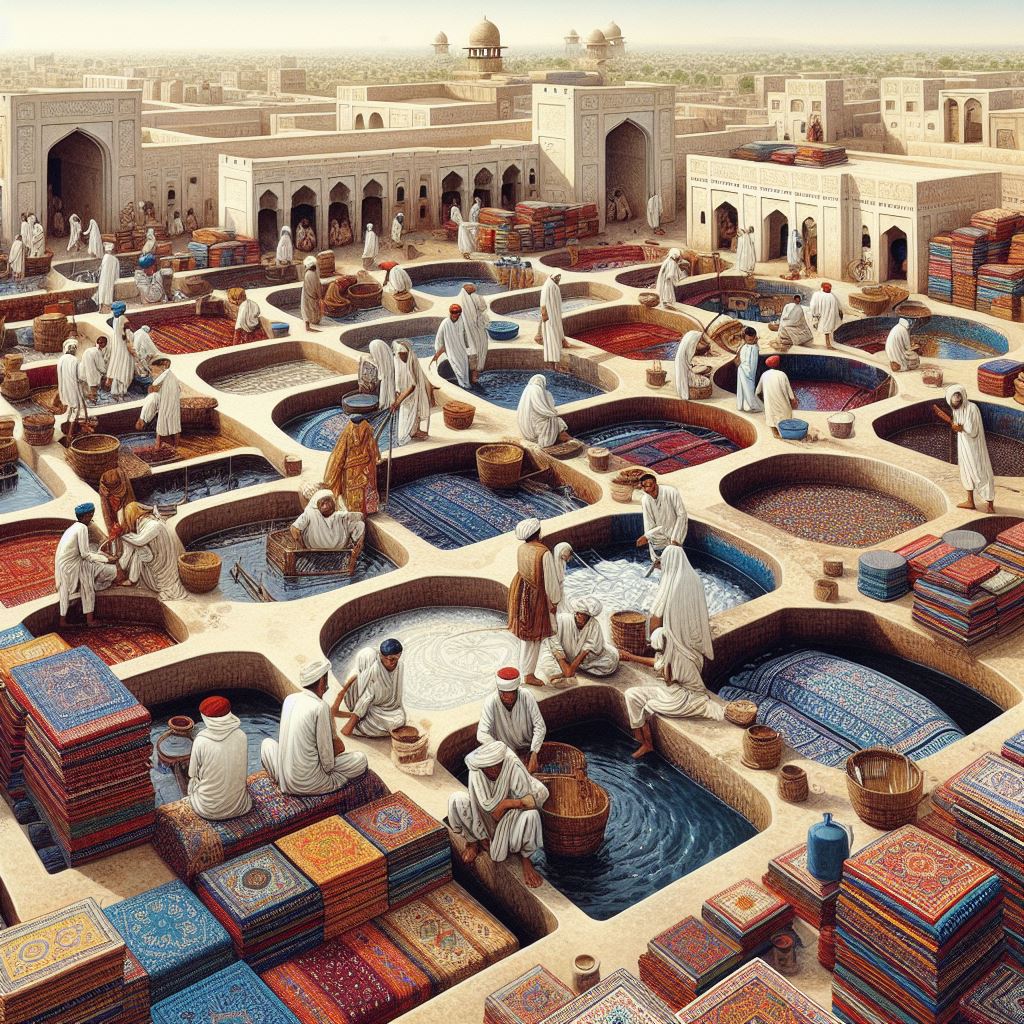 |
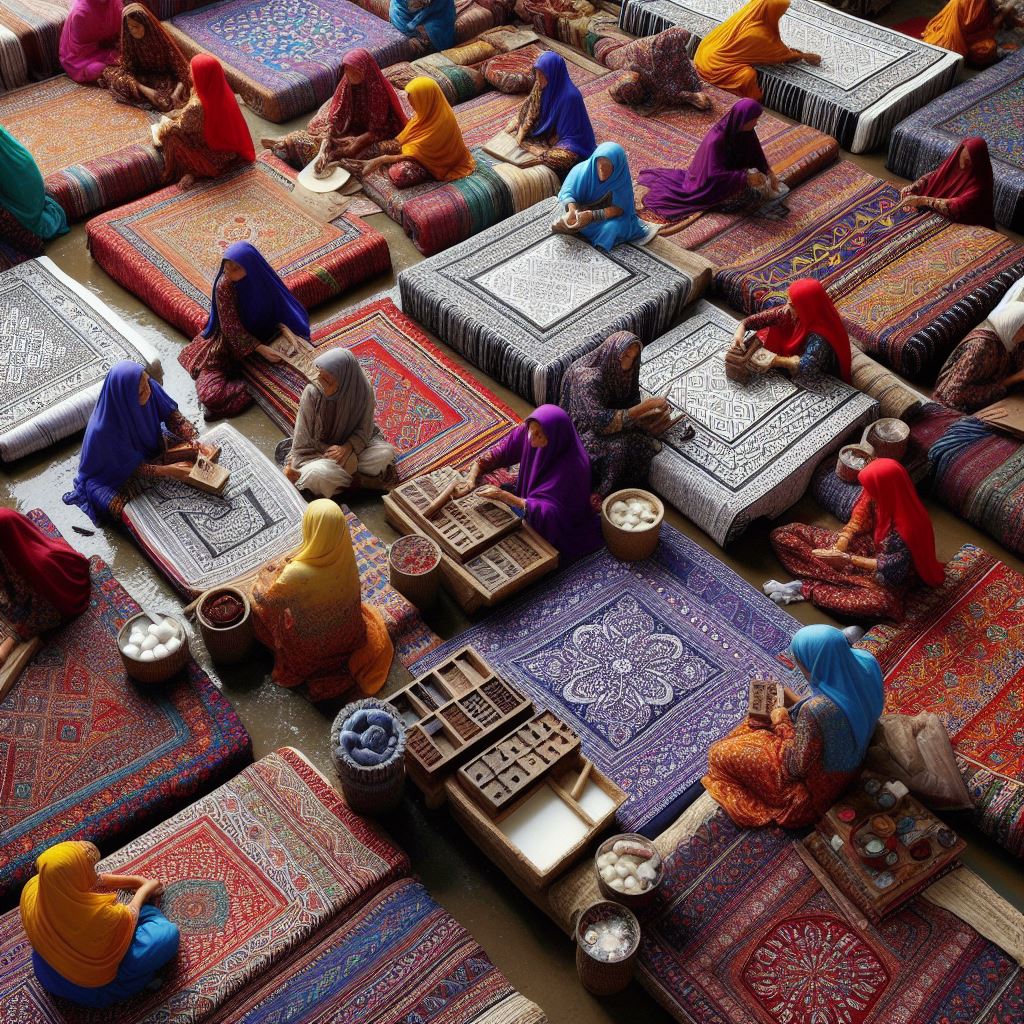 |
Colors and Patterns
Colors:
The four primary colors of Ajrak are usually red, blue, black, and white. The traditional colors of Ajrak include:
- Indigo Blue: Derived from the indigo plant, this color is one of the most iconic and predominant in Ajrak designs.
- Red: Extracted from madder root, red provides a striking contrast to the blue.
- Black: Often used to outline patterns, black is derived from iron rust.
- White: The natural color of the cotton fabric, providing a background for the other colors.
Patterns:
The intricate geometric patterns and symmetrical motifs that define the designs are characteristic of Islamic art and architecture. The brilliant and long-lasting hues of Ajrak fabrics are also achieved by the use of vegetable and mineral dyes.
Materials Used
The materials used in Ajrak production are mostly natural:
- Cotton Fabric: The primary material, preferred for its softness and durability.
- Natural Dyes: Including indigo (from the indigo plant), madder (for red), and other plant-based dyes.
- Wooden Blocks: Hand-carved blocks made from wood like teak or mango, used for printing designs.
Ajrak of Sindh - Designer wear
Embroidered motifs are added to add value and beautify this vibrant length of material. The pieces are further adorned with sequined work and beads to give it a more festive look.
Golden thread-work is added for adding to trousseaux. Other than home textile, it can also be stitched as Shalwar Kameez, the traditional wear of women of Pakistan - with a beautiful Ajrak dupatta (scarf) to match.
To view more designs visit the online store Sindh Crafts.
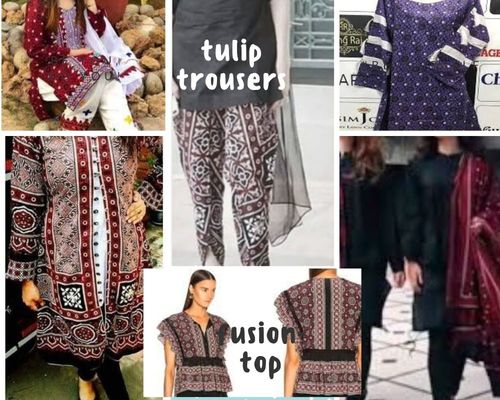 Ajrak Designer Outfits
Ajrak Designer Outfits- Home
- Home Textile of Pakistan
- Ajrak of Sindh